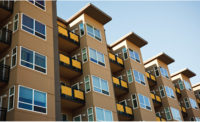I remember several years ago when LEED certification began to really take off and everyone was excited about how much energy each building project was going to save by being LEED certified. It only took a few years before that energy-efficient building was being occupied and the projected operating cost savings just weren’t there. In fact, there were newspaper and magazine articles written about some of these new buildings that displaced older buildings. What was being highlighted in these stories was that the new energy-efficient facilities were actually using more energy than their predecessors. If that wasn’t bad enough, these new high-performance buildings’ automation systems were very, very complicated to operate — often, the controls were simply overridden, with the controls placed in manual operation.
Back then, I wrote a couple of columns about how measurement and verification were critical to assuring energy conservation performance success, but measurement and verification were an option and not a prerequisite with LEED, so a lot of time and money was lost until design-to-actual energy consumption started to be measured. Today, we have a new panacea for reducing energy and saving the planet … net zero designs.
This enhanced quest for zero energy buildings, green guides, and advanced green guides all have great intention, but are these goals truly achievable? I believe most energy conservation and environmental initiatives are worth pursuing, but I also believe when it comes to the optimum HVAC system selection, the design engineer should begin with chapter 1, HVAC System Analysis and Selection, in the 2012 ASHRAE Handbook.
This chapter will certainly help the design team head in the right direction in their pursuit of net zero. The course for system selections needs to be technically established by following chapter one’s analytical process, created from time-tested quality control methods. Analogous to the phrase, “dot the I’s and cross the T’s,” that first chapter helps the design engineer do just that and avoid thinking she can skip this step simply because they have years of experience in designing energy-efficient buildings.
For a net zero basis of design, the engineer has to be very thorough in her selection of HVAC systems for the project. Page 1.1 of chapter 1 provides a process flow diagram to guide the engineer through the steps to analyze and make the optimum selections. I’m pretty confident that most design engineers gloss over this critical first step and simply go to an energy building simulation software that will provide what will be assumed as the most energy efficient HVAC system selection, without taking into account all the considerations and constraints of their project.
For a building to achieve net zero, there must be real-world design, build, operate, and maintain teamwork. In chapter one of the 2012 Handbook, the process flow diagram (page 1.1) shows four project delivery methods, and I’m confident that only design-build (a.k.a. integrated project delivery [IPD]) will be able to span the bridge from theoretical to actual design intent performance. While building energy simulation software can show that zero-energy building performance can be achieved, it is the buy-in by each IPD team member that will commission the performance and make the performance sustainable.
Important pieces of the net zero project puzzle are the same pieces that get overlooked on a regular basis for a majority of building programs:
- Facility operation input, from the design concept phase to taking ownership of the building at the end of construction;
- Facility personnel training beginning in the conceptual design phase of the project;
- Commitment to an operating budget to support the level of effort it will take to sustain the building’s energy performance;
- Continuous commissioning by trained personnel, with the resources to maintain optimum performance.
So just like those LEED certifications and awards for a design well done before anyone kicked the tires, start with chapter one of the ASHRAE Handbook, HVAC Systems and Equipment, before running that high-performance building software simulation.ES





